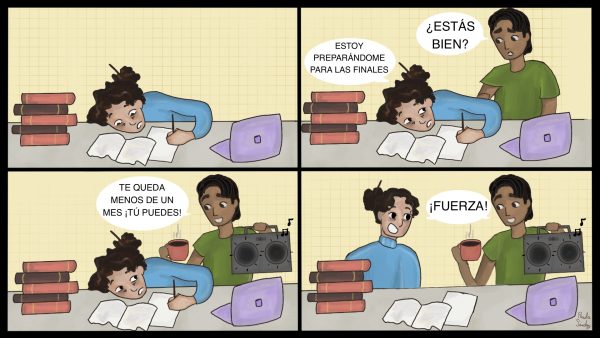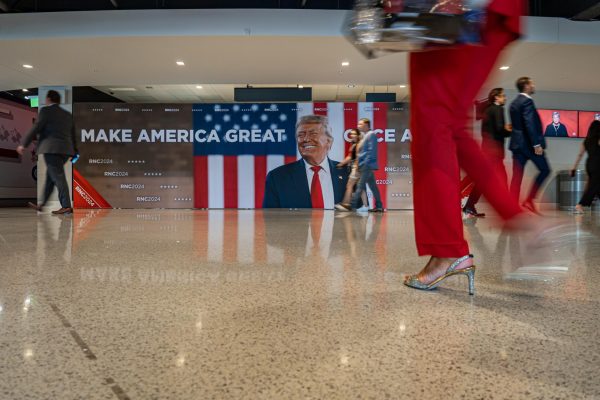Notable Native: Paul Dailing
Breast cancer plagued Lindsay Avner’s family. At 12 years old, she watched her mother battle the disease and later learned it affected her grandmother and great grandmother as well. After finding out at 22 that she carried the BRCA 1 gene, which raises a carrier’s chance of developing breast cancer 10 percent more than the national average of 12.7 percent, according to the National Cancer institute, she decided not to take any chances. To preempt the diseases, she had a prophylactic double mastectomy.
Her brush with breast cancer inspired her to found Bright Pink, a nonprofit organization that advocates for breast and ovarian cancer research, in 2007. In the seven years since, it has grown from its Chicago roots to a nationwide movement.
The Chronicle spoke with Avner about Bright Pink’s mission, the state of breast cancer detection, how to provide breast cancer awareness and her vision for improving cancer screenings.
THE CHRONICLE: What is your job as the CEO of Bright Pink?
LINDSAY AVNER: I lead the charge to educate young women nationwide on how to be proactive advocates for their breast and ovarian health. On a daily basis, I guide the strategic direction and oversee operations for the organization. Each hour is different. One hour I may be focused on developing a new program with a corporate sponsor, and the next I’ll be meeting with a team of doctors and genetic counselors to work on the national expansion of our Emerging Medical Professionals Workshop. I spend a lot of my time balancing being external, the face and voice of the organization, and being internal to help set the strategy, define success and remove obstacles so that my team can work their magic.
How does Bright Pink work with the community to provide information about breast cancer awareness?
We live in a world where most young women don’t know the breast and ovarian health basics. They don’t make their health a priority or understand that the actions they take today can impact their risk for these diseases in the future. Bright Pink is dedicated to transitioning the national conversation around breast and ovarian cancer from one centered on awareness to one about life-saving action. We spend 365 days a year talking, lecturing, tweeting, messaging and texting about early detection and prevention strategies. It’s what we’re committed to on a daily basis, and it’s how we hope to make an impact and ultimately change the game.
Why do you think that breast cancer awareness important?
I started Bright Pink when I was 24 years old because I wanted things to be different. For my family, it seemed the rulebook had already been written: Women in my family got breast cancer. Sometimes they were dealt a second card of ovarian cancer. When I was 12, I watched my mother go through treatment for both diseases. She beat the odds, and unlike the 11 women in my family before her, she survived. Every woman has a one in eight chance of developing breast cancer and a one in 67 chance of developing ovarian cancer, but when detected early, the survival rate can be as high as 95 percent. I started Bright Pink because I want every young woman to be vigilant and beat the odds just like my mom.
What are some of Bright Pink’s and your own personal accomplishments?
A highlight of this year has been watching the launch of our Emerging Medical Professionals Program. Through this program, we are educating OB-GYN residents across the country to better stratify and manage breast and ovarian cancer risk in their young patients. This fall, we will reach over 750 OB-GYN residents who will, in turn, be better equipped to proactively care for more than 2.5 million patients in the next year. And by 2019, we will be able to say that every single OB-GYN who goes into practice will have been through this program and will be better equipped to care for their female patients. This month alone, we’ve had the chance to present at both Harvard and Johns Hopkins [universities], and I think that is pretty brilliant.
May 2, 2016
With a passion for history—and a need to earn extra money while working as a freelance journalist—Paul Dailing started hosting Chicago corruption walking tours. The tours run through June, but Dailing said he plans to add more tour dates soon.
Though he said he can write about crooked politicians, bribes and blackmail until he is “blue in the pen,” Dailing thinks taking people to places where corruption has occurred and letting them see it is more moving than reading about it.
The Chronicle spoke with Dailing about his tour, the work that went into it and his plans for future tours.
THE CHRONICLE: How did you come up with the idea for the walking tour?
PAUL DAILING: I’m a journalist, and last year, I wasn’t doing too well on freelancing. I needed some money, so I started doing boat tours. That had been my first job when I moved to Chicago, so I still knew a lot of people. I didn’t realize how much I missed it—interacting with people, sharing these stories—and the tour just kept getting nerdier and nerdier.
I was doing all this research, and I found out people were really reacting positively. I started taking other tours to see about employment after the boats closed, and a couple in particular [really] blew my mind. I started thinking, “The market is open.” People are finding and taking these weird tours. [They’re] interested in nerdier tours—it’s not just Al Capone, pizza and the Sears Tower.
I used to be a political reporter, so this is kind of my area as well. I thought people might be interested in this, and it would give me a chance to tell really important stories that are normally seen as too boring.
What can people expect from the tour?
I talk about Operation Greylord, which is where the feds had a couple people wear wires and report because people were literally buying their way out of convictions; they were literally bribing judges to drop charges. It was a three-year investigation; the feds got the Justice Department to approve bringing fake cases before the judges so that they could offer bribes. The ‘criminals’ were FBI agents playing criminals so they could get judges on tape accepting bribes. There were [also] four governors who went to prison. I talk about them, and I talk about how a blackmailer built the Loop [elevated train cars].
How much work went into creating the tour?
I owe the Harold Washington Library my firstborn child at this point. I can see from where I’m standing a big stack of overdue books. [It took] a lot of research—a lot of work. Some of it was online—the [Chicago] Tribune archives are a fantastic resource. I started doing the preliminary research last year, and then I sort of let it drop for a couple of months and picked it back up. Since I started doing the research I was like, “OK. Barbara Byrd-Bennett.” [The corruption in Chicago] wouldn’t let up.
Why do you plan to add more tour dates in the future?
I will definitely be adding more tours because the response to this has been so positive over the last couple of days. I just didn’t want to book myself for every weekend if people weren’t interested. People do seem to be interested, so there will be more dates coming. This is just side work—I don’t intend to make this my full-time profession—just something I can do to share my city, to educate some people on some issues and help my bills go away.


![Breast cancer plagued Lindsay Avner’s family. At 12 years old, she watched her mother battle the disease and later learned it affected her grandmother and great grandmother as well. After finding out at 22 that she carried the BRCA 1 gene, which raises a carrier’s chance of developing breast cancer 10 percent more than the national average of 12.7 percent, according to the National Cancer institute, she decided not to take any chances. To preempt the diseases, she had a prophylactic double mastectomy.Her brush with breast cancer inspired her to found Bright Pink, a nonprofit organization that advocates for breast and ovarian cancer research, in 2007. In the seven years since, it has grown from its Chicago roots to a nationwide movement.The Chronicle spoke with Avner about Bright Pink’s mission, the state of breast cancer detection, how to provide breast cancer awareness and her vision for improving cancer screenings.THE CHRONICLE: What is your job as the CEO of Bright Pink?LINDSAY AVNER: I lead the charge to educate young women nationwide on how to be proactive advocates for their breast and ovarian health. On a daily basis, I guide the strategic direction and oversee operations for the organization. Each hour is different. One hour I may be focused on developing a new program with a corporate sponsor, and the next I’ll be meeting with a team of doctors and genetic counselors to work on the national expansion of our Emerging Medical Professionals Workshop. I spend a lot of my time balancing being external, the face and voice of the organization, and being internal to help set the strategy, define success and remove obstacles so that my team can work their magic. How does Bright Pink work with the community to provide information about breast cancer awareness?We live in a world where most young women don’t know the breast and ovarian health basics. They don’t make their health a priority or understand that the actions they take today can impact their risk for these diseases in the future. Bright Pink is dedicated to transitioning the national conversation around breast and ovarian cancer from one centered on awareness to one about life-saving action. We spend 365 days a year talking, lecturing, tweeting, messaging and texting about early detection and prevention strategies. It’s what we’re committed to on a daily basis, and it’s how we hope to make an impact and ultimately change the game.Why do you think that breast cancer awareness important?I started Bright Pink when I was 24 years old because I wanted things to be different. For my family, it seemed the rulebook had already been written: Women in my family got breast cancer. Sometimes they were dealt a second card of ovarian cancer. When I was 12, I watched my mother go through treatment for both diseases. She beat the odds, and unlike the 11 women in my family before her, she survived. Every woman has a one in eight chance of developing breast cancer and a one in 67 chance of developing ovarian cancer, but when detected early, the survival rate can be as high as 95 percent. I started Bright Pink because I want every young woman to be vigilant and beat the odds just like my mom.What are some of Bright Pink’s and your own personal accomplishments?A highlight of this year has been watching the launch of our Emerging Medical Professionals Program. Through this program, we are educating OB-GYN residents across the country to better stratify and manage breast and ovarian cancer risk in their young patients. This fall, we will reach over 750 OB-GYN residents who will, in turn, be better equipped to proactively care for more than 2.5 million patients in the next year. And by 2019, we will be able to say that every single OB-GYN who goes into practice will have been through this program and will be better equipped to care for their female patients. This month alone, we’ve had the chance to present at both Harvard and Johns Hopkins [universities], and I think that is pretty brilliant.](https://columbiachronicle.com/wp-content/uploads/2016/05/ec6c842b8a261512dc9e885383c7bcb8-900x600.jpg)





